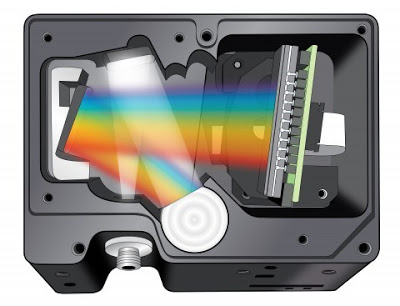Optical Emission Spectroscopy

Optical emission spectroscopy allows non-perturbing characterization of plasma parameters survey of atomic and molecular species via the emission from excited levels. High spectral resolution approach is employed for determination plasma characteristics via line broadening or vibrational\rotational molecular temperatures. Low resolution broadband spectroscopy is used for identification of excited species in plasma.
For high resolution of spectral lines, we will apply OES diagnostic based on imaging spectrometer Horiba iHR 550. It features adjustable, motorized slits at spectrometer input and output ports. Two output ports can be coupled with either 2D sensors (CCD camera, fast frame camera or iCCD camera) and/or 1D sensors (photodiode, PMT), therefore this approach has a very high spatiotemporal resolution. An interchangeable triple grating (consisting of 2400/1200/150 gr/mm ruled gratings) serves as dispersion element. The use of high resolution grating (2400 gr/mm) results in spectral dispersion of 0.3-0.8 A/pix on the camera sensor, that allows one to obtain plasma electron density (Stark broadening) and atom/ion temperature (Doppler broadening). Analysis of molecular bands (nitrogen) with intermediate resolution grating (1200 gr/mm) is used to measure the temperature of molecular gases, because it allows to capture the full molecular branch on single screen, while also maintaining high spectral resolution. The excitation electron temperature is typically obtained by the Boltzmann diagram method with the low resolution grating (150 gr/mm), because the pairs of Balmer α and β or β and γ can be captured simultaneously. In the case that the plasma is in local thermodynamic equilibrium (i.e. electron density is >1015 cm-3) the excitation temperature is equivalent to electron plasma temperature.
For monitoring and identification of all species in the plasma, a broadband emission spectrum is typically obtained, where broad wavelength range is acquired simultaneously, across several hundred of nm. In our lab we have several Ocean Optics spectrometers that span the 190-1100 nm range, granting the identification of emission in the whole visible spectrum and beyond. We also have a significant expertise in assembling optical imaging setup, in order to localize the emission origins to spatial regions with dimensions of ~1 mm2, thus making possible to localize the emission from different species. This approach is convenient for identification of species of interest.